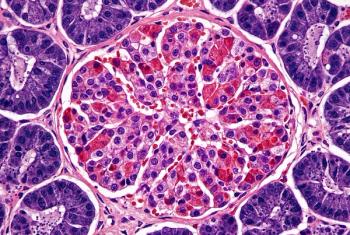
Retrospective analysis demontrates that switching statins hinders treatment compliance, persistence
Patients who have switched statins should receive special care as they are substantially less likely to be compliant and remain on the treatment long enough to obtain its full benefits, researchers reported in the American Journal of Managed Care.
Patients who have switched statins should receive special care as they are substantially less likely to be compliant and remain on the treatment long enough to obtain its full benefits, researchers reported in the American Journal of Managed Care.
Their conclusion was based on a retrospective database analysis consisting of 38,866 new statin users, aged 18 to 65 years, who were beginning treatment with atorvastatin, fluvastatin, lovastatin, pravastatin, or simvastatin. The data were provided by a large pharmacy benefit manager (PBM) through its pharmacy claims.
Patients who had switched statins were less compliant by 18.9% (OR, 0.81; P<.001), as defined by the probability of having a medication possession ratio (MPR) of 0.8 or higher. They also were less persistent by 20.9% to 48.3% (P<.001), depending on the gap length used to define discontinuation.
Of the 38,866 patients included in the study sample, 8.4% (n=3,248) switched drugs during their first year of treatment. The others (n=35,618) continued taking their initial drug throughout follow-up or stopped statin treatment completely.
The observed difference in persistence between switchers and nonswitchers for a 30-day gap in treatment increased from 34.6% at 6 months to 44.2% at 1 year. This resulted in part because the proportion of switchers increased with the length of time from the initial prescription; at 6 months, only 56.5% of the switchers had changed their statin treatment.
"If the switch is detrimental to persistence, we should observe a widening gap between switchers and nonswitchers," the researchers stated. "This is precisely what happens, with the odds of discontinuation within a year being at least 25% greater than within the first 6 months."
In addition, most switchers filled 4 or more prescriptions (based on an MPR level of ≥0.4).
"This level of compliance is to be expected because switchers need to be sufficiently motivated to stay on treatment long enough to undergo a change in therapy," the authors stated. "Those who lack this minimum level of motivation and consider stopping treatment after 1 or 2 prescriptions are unlikely to try a different statin."
Nonetheless, the mean MPR and the likelihood of compliance and persistence were lower for switchers than nonswitchers, "lending support to the idea that compliance drops after switching drugs," the authors noted.
Switchers were less likely to increase the dosage of their initial prescription; in turn, they reduced their out-of-pocket cost per prescription by $1.33 on average.
"The decision to switch drugs does not appear to be motivated by cost considerations," the researchers stated. "Patients who switched to a new drug saved $1.33 per prescription on average, which is too small an amount to act as a significant incentive for most patients."
The researchers stressed that their study consisted of continuously eligible commercially insured patients and did not reflect prescription utilization patterns of specific populations, such as retirees or patients transitioning between employer-sponsored insurance plans.
SOURCE Thiebaud T, Patel BV, Nichol MB, Berenbeim DM. The effect of switching on compliance and persistence: the case of statin treatment. Am J Managed Care. 2005;11:670–674.
Newsletter
Get the latest industry news, event updates, and more from Managed healthcare Executive.






















































